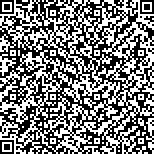陈亮,陈洁,金戈,胡玲,李兴贵,展群岭.高频重复经颅磁刺激治疗脑卒中后抑郁的有效性及安全性系统评价[J].中华物理医学与康复杂志,2018,40(6):441-448
扫码阅读全文

|
| 高频重复经颅磁刺激治疗脑卒中后抑郁的有效性及安全性系统评价 |
|
| |
| DOI: |
| 中文关键词: 高频重复经颅磁刺激 脑卒中后抑郁 有效性 安全性 Meta分析 系统评价 |
| 英文关键词: High-frequency magnetic stimulation Transcranial magnetic stimulation Magnetic stimulation Depression Stroke |
| 基金项目:重庆市卫计委面上项目(2015MSXM108);重庆市科委指导项目(cstc2016shmszx130084) |
|
| 摘要点击次数: 5759 |
| 全文下载次数: 6700 |
| 中文摘要: |
| 目的 系统评价高频重复经颅磁刺激(rTMS)治疗脑卒中后抑郁(PSD)的有效性与安全性。 方法 计算机检索Cochrane Library、Medline、Embase、中国生物医学文献数据库(CBM),检索有关高频rTMS治疗PSD的随机对照试验(RCT),检索时限为建库至2017年10月。由两位评价者独立筛选文献、提取资料并评价纳入研究的偏倚风险后,采用RevMan 5.1软件进行Meta分析。 结果 共纳入26项RCT,包括1810例PSD患者。Meta分析结果表明,高频rTMS组的痊愈率、有效率明显优于对照组,痊愈率[相对危险度(RR)=2.15,95%CI(1.64,2.83),P<0.05],有效率[RR=1.66,95%CI(1.28,2.15),P<0.05]。高频rTMS组的HAMD评分明显低于对照组[标准化均数差(SMD)=-0.59,95%CI(-0.86,-0.32),P<0.05]。两组治疗后脱落例数比较,差异无统计学意义[RR=0.55,95%CI(0.18,1.65),P>0.05]。高频rTMS组的头痛发生率高于对照组[RR=2.72,95%CI(1.29,4.65),P<0.05]。 结论 高频rTMS治疗PSD具有良好的疗效和较好的可接受性,但需注意头痛等不良反应。受纳入研究的数量和质量限制,上述结论尚需开展更多高质量研究予以验证。 |
| 英文摘要: |
| Objective To evaluate the efficacy and safety of high-frequency repetitive transcranial magnetic stimulation (rTMS) in the treatment of post-stroke depression (PSD). Methods The Cochrane Library, Medline, EMbase and CBMdisc were electronically searched for reports of randomized and controlled trials (RCTs) of high-frequency rTMS in the treatment of PSD before October 2017. Two researchers screened the reports independently, extracted data and assessed the risk of bias in the included studies. The meta-analysis was performed using version 5.1 of the RevMan software. Results A total of 26 RCTs were included, covering 1810 patients with PSD. The meta-analysis showed that the remission rate [relative risk (RR)=2.15, 95%CI (1.64, 2.83)] and the effectiveness [RR=1.66, 95%CI (1.28, 2.15)] of high-frequency rTMS group were significantly higher than in the control groups. Compared with the control group, the average Hamilton depression rating scale (HAMD) score of the high-frequency rTMS groups was significantly lower than in the control groups. There was no significant difference in withdrawal between the two groups after treatment [RR=0.55, 95%CI (0.18, 1.65)]. The incidence of headaches was significantly higher in the high-frequency rTMS group than among the controls. Conclusion High-frequency rTMS has a good curative effect and better acceptability for PSD patients, but attention should be given to headaches and other adverse reactions. Due to the limited number of studies and their quality, these conclusions still need to be verified in better-quality studies. |
|
查看全文
查看/发表评论 下载PDF阅读器 |
| 关闭 |